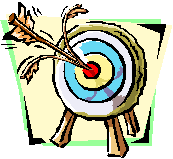Working with my medical team, I have recorded tens of thousands of eye pressure measurements with a variety of tonometers under a variety of conditions. This blog post describes a recent comparison we performed between the Reichert AT555 (a non-contact tonometer or NCT) we use for most eye pressure measurements and Goldman applanation tonometry (GAT) performed by one of the doctors on my medical team. I believe our data indicates that the Reichert AT555 tonometer does an excellent job. You can find further discussion on the accuracy of different types of tonometers in this article on the Intraocular Pressure Research blog.

This set of intraocular pressure values are from a day when my eye pressure was elevated. Both the Reichert AT555 tonometer and Goldman applanation tonometer used by the doctor detected the increased eye pressure accurately.
LEFT RIGHT
11/30/06 3:06 PM 17.7 25.7 AT555 NCT out of office
11/30/06 4:29 PM 19.0 27.0 GAT by doctor in office
11/30/06 4:30 PM 18.0 26.0 GAT by doctor in office
11/30/06 6:17 PM 17.7 25.7 AT555 NCT out of office
The two sequential eye pressure measurements taken by the same doctor with the same Goldman-type applanation tonometer differed by 1 mm Hg each. These measurements were taken 1 minute apart. It is common for subsequent measurements to decrease like this. Notice that the last eye pressure measurement with the Reichert AT555 tonometer is in almost perfect agreement with the last measurement by Goldman tonometry. It probably isn't possible for eye pressure measurements separated in time and place to be in any closer agreement than what we see above.
Here is another comparison, this time both measurements were done in the same office at the same time by another doctor on my team.
LEFT RIGHT
11/28/06 3:50 PM 16.7 18.0 AT550
11/28/06 3:55 PM 17.0 18.5 GAT
Again, the values agree as closely as can be expected. Repeating the two eye pressure measurements with the same instrument would not produce values any closer in agreement. We can conclude that the non-contact tonometers used above are accurate. There is plenty of published research to support my experience. (Some abstracts can be found on the tonometers forum. And here is a blog article with my reply to someone who said air puff tonometers are not very accurate.)
The above was a fairly normal eye pressure day for me. My average eye pressure for the whole day was 14.4 left and 15.1 right. The eye pressure values shown above are higher because they were taken in the doctor's office and my eye pressure is always higher in the doctors office compared to at home. There isn't much in the scientific literature yet that agrees with my experiences, but I'm sure I am not alone in experiencing increased eye pressure in the doctors office.
We periodically collect intraocular pressure measurements from different instruments (and by different doctors) in order to provide a cross check in the data. Most of the measurements come from non-contact tonometers, but as the above comparisons show, I think the non-contact tonometer data is pretty good. The sheer volume of my data helps too. I have 11,232 measurements now. [UPDATE: 16,785 eye pressure measurements now, and growing.]
By the way, each non-contact tonometer value reported above is the average of 3 measurements.
You can find further discussion on the accuracy of different types of tonometers in this article on the IOP Research blog.
Filed Under (tags):
- dave's blog
- Log in or register to post comments

